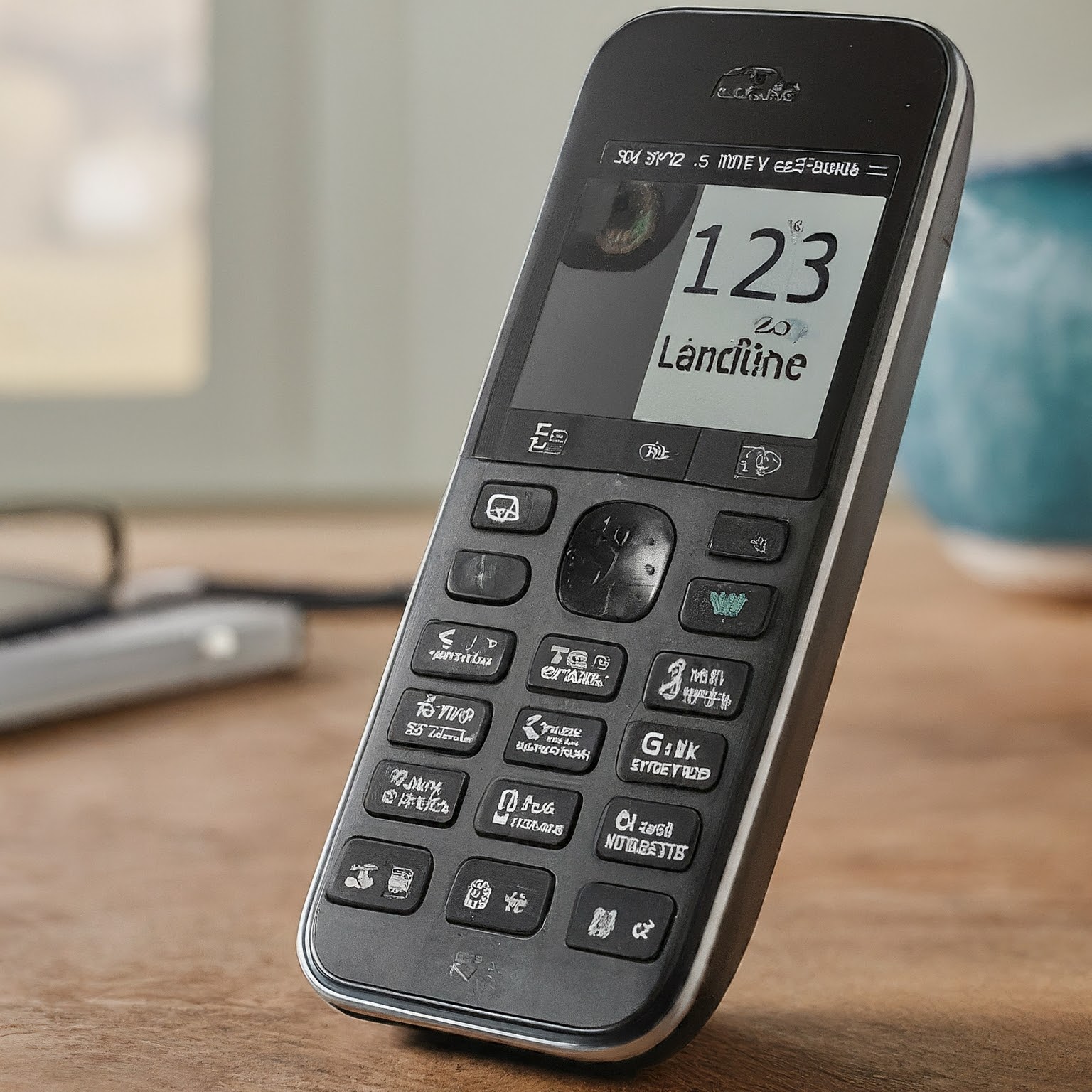In today’s world of mobile phones and video calls, the humble landline phone might seem like a relic of the past. However, there are still many reasons why an AT&T landline can be a valuable addition to your home communication system. This comprehensive guide explores everything you need to know about AT&T landline service in 2024, including traditional and digital options, plans, features, and considerations for making the best choice for your needs.

Traditional Analog Landlines: Reliability and Simplicity
AT&T offers traditional analog landline service, which provides a familiar and reliable phone connection. This type of landline works independently of your internet connection, making it a good choice for those who prioritize a guaranteed phone line even during power outages or internet disruptions.
Here’s a breakdown of traditional analog landline service:
- Connection: Works through a physical phone line installed in your home.
- Features: Basic calling functionality, including call waiting, caller ID, and voicemail (may require additional fees).
- Plans: AT&T offers various plans with options for:
- Flat-rate monthly pricing for unlimited local calling.
- Metered billing for pay-per-call usage.
- Long-distance calling plans for out-of-area calls.
Pros:
- Reliable connection independent of internet outages.
- Familiar and easy-to-use technology.
- Potentially cost-effective for users with limited calling needs.
Cons:
- Limited features compared to digital options.
- May require additional fees for features like voicemail.
- Prone to static and interference during bad weather conditions.
Digital Landlines with AT&T Phone: Feature-Rich and Modern
AT&T Phone offers digital landline service, which utilizes Voice over Internet Protocol (VoIP) technology. This means your phone service runs over your existing internet connection, providing a wider range of features and potentially clearer call quality.
Here’s a closer look at AT&T Phone digital landline service:
- Connection: Works through your existing AT&T internet connection (minimum speed of 1.5 Mbps required).
- Features: Includes standard features like call waiting, caller ID, voicemail, and often offers additional functionalities like:
- Three-way calling.
- Call forwarding.
- Simultaneous voice and internet usage.
- Enhanced call quality (HD Voice).
Plans: AT&T Phone typically bundles digital landline service with their internet plans, offering a convenient all-in-one package. However, standalone digital phone plans might be available in some areas.
Pros:
- Wider range of features compared to traditional landlines.
- Often clearer call quality with HD Voice technology.
- Potential cost savings through bundled packages with internet.
Cons:
- Reliant on a stable internet connection for functionality.
- May not be ideal for areas with unreliable internet service.
- Requires a compatible VoIP phone adapter or phone specifically designed for VoIP use.
Choosing the Right AT&T Landline Service for You
Whether you choose a traditional analog landline or a digital AT&T Phone service depends on your specific needs and priorities. Consider the following factors when making your decision:
- Calling Habits: If you make frequent calls or require unlimited local calling, a flat-rate plan might be the most cost-effective option.
- Internet Reliability: For digital phone service, a reliable and stable internet connection is crucial.
- Desired Features: If features like voicemail, call forwarding, and HD call quality are important, then digital AT&T Phone service might be a better choice.
- Budget: Consider the monthly cost of the service, including plan fees and potential equipment charges.
Additional Considerations:
- Backup Battery: For both traditional and digital landlines, consider investing in a backup battery for your phone to ensure continued functionality during power outages.
- Security Features: Explore additional security features like call blocking to prevent unwanted robocalls.
- Equipment: For digital service, ensure you have compatible VoIP equipment or a phone designed for VoIP use.
Making the Switch to AT&T Landline Service:
If you’ve decided to get an AT&T landline, the process is relatively straightforward. Here are the general steps:
- Contact AT&T: Visit their website or call customer service to explore available plans and options in your area.
- Choose a Plan: Select the plan that best suits your calling needs and budget.
- Schedule Installation: If opting for traditional service, schedule installation for the phone line. For digital service, ensure your internet connection meets the minimum speed requirements.
- **Equipment
لا تعليق